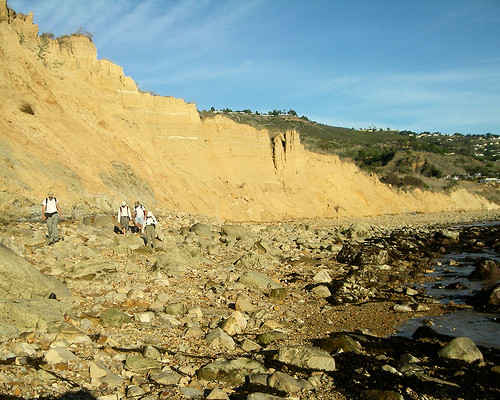
Location: The Southern section of the Rocky Mountains, near the border of Alberta and British Colombia on Turtle Mountain. The nearby town of Frank was bustling at the time due to the opening of a coal mine at the base of the mountain in 1901. The mountain was also famous for the native lore that surrounded it, and it got its name from the slow rock movement that the natives believed was occurring on it.
Cause: The base of the mountain is made up of coal and rock fragments, and the surface if limestone and dolomite. Over a very long time water began seeping into the cracks at the base of the mountain causing it to become very unstable.
Occurrence: The Frank Slide happened on April 29, 1903 at about 4:10 am. The East side of the mountain gave way causing large slabs of rock to tumble into the valley. The dimensions of the section of rock that fell was 150 meters deep, 425 meters high and one kilometer wide. The rocks slid 701 meters down into the valley and covered it in about two square miles of rock.
Damage: - caused a blockage of the Crowsnest River creating a lake
- bridges across Gold Creek and Old Man River were destroyed
- two miles of the CPR was covered and was not back in operation until a month later
- the entrance to the coal mine was buried, miraculously 17 miners were able to find there way out within a day
- seven houses were buried, outbuildings were destroyed, and many tents providing temporary housing were wiped out
- the town's power plant and cemetery were buried
- a construction camp and town car were also buried
- 76 people were killed, 24 people in the path of the slide survived, only 12 bodies were recovered
Aftermath: The South part of the town of Frank was forced to be closed down by the government in 1911. In 2005 a permanent monitoring station was built for the movement of the mountain. In 1985 an interpretive center was built for people to learn about the slide.

Location: On Johnson Peak, 12 miles South of the town of Hope, BC. Hope is East of Vancouver where the Fraser valley meets the Coast Mountain range.
Cause: A first earthquake at a about 3:56 am on January 9, 1965, three hours later another earthquake occurred causing the slide.
Occurrence: The first earthquake caused a small avalanche that blocked off the highway in the area. Due to the fact that there was so much snow at that time of the year no one predicted that the whole rock face of the mountain was going to come tumbling down. Three hours later the entire southeast slope of Johnson Peak came tumbling down. About 60 million cubic yards of rock, snow, mud and trees tumbled 6000 feet into the valley below. The depth of the debris was about 200 feet.
Damage: - Outram Lake was obliterated
-two miles of highway was covered
-four people were buried, but only two of four bodies were found
Aftermath: Since the rocks were too deep to move they had to rebuild the highway around it, yet since the mountain was in a more remote area then the Frank Slide there was not too much damage that had to be repaired.

Location: The Palos Verdes Hill in California. Part of a peninsula.
Cause: A housing development that began in the 1950's, and a road that was built. Also due to the fact that pools, and underground pipes were constructed it meant that the ground had increased water levels.
Occurrence: The first signs of the slide was on August 17, 1956. Cracking was occuring in buildings around the area and although the cracks were repaired they all showed up again a couple days later. Soon the cracking began to go onto the road as well, and soon after that distortions in the road were also visible. Every day there would be about 7-10 cm of movement. The movement and sliding effected about 80 acres of land, much of it being residential areas.
Damage: Although no one died, many had to leave their homes and a lot of construction work had to be done in order to repair the damage.
Aftermath: All water lines have been moved to the surface in order to not increase the amount of water in the ground, and people no longer live in the area.
